Science Daily News | 01 Jul 2023

Views (140)
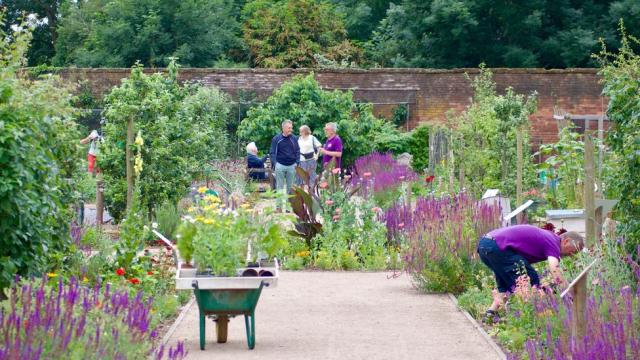
Why nighttime heat can be so dangerous – and why it’s getting worse
Forecasters are warning that there is a more dangerous aspect to heat waves these days: overnight temperatures are not cooling down enough
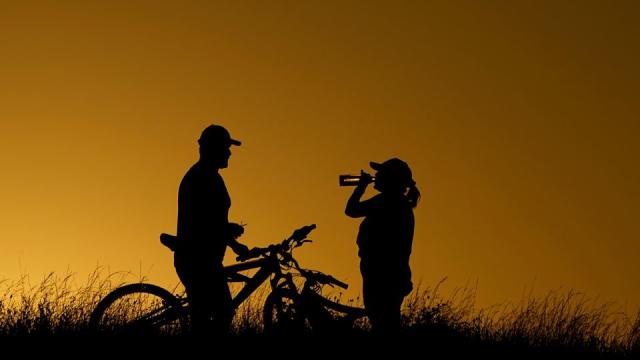
Summers are getting hotter than ever, shattering all-time high temperature records, straining the energy grid and damaging critical infrastructure.
“Most people don’t realize that hot nighttime temperatures have been outpacing daytime temperature increases across most populated regions worldwide in recent decades,” Columbia University’s Data Science Institute postdoctoral research scientist Kelton Minor told CNN.
Places with a lot of asphalt, concrete, buildings and freeways absorb more of the sun’s heat than areas with ample parks, rivers and tree-lined streets. At night, when temperatures are supposed to cool down, the retained heat is released back into the air, said University of Washington climate and health expert Kristie Ebi.
Areas with a lot of green space – with grass and trees that reflect sunlight and create shade – are cooler on summer’s hottest days, she said.
“Many cities put together cooling shelters, but people have to know where they are, how to get to them and what hours they operate,” Ebi told CNN, noting city officials must rethink urban planning to consider climate change.
“It’s going to take a while for trees to grow, but we need tree-planting programs focusing on places that are particularly vulnerable, making sure that city planning takes into account that we’re heading into a much warmer future.”
“We all know what it’s like to try to fall asleep on a hot night – it’s uncomfortable,” Patel said. “We often lose sleep. It is estimated that by the end of the century, we could lose about two days of sleep per year, and it will be worse for people without access to air conditioning.”
At its most extreme, when a human body does not get the chance to recover – typically at night – heat stress can progress to heat stroke, which is associated with confusion, dizziness and passing out, Patel explained.
People around the world are already losing roughly 44 hours of sleep every year on average due to warm nighttime temperatures during just the first part of the 21st century, Minor’s study estimated. He calls this “sleep erosion,” noting each person may lose up to 58 hours of sleep by the end of the century.
“People in our study did not appear to make up for lost sleep on hotter nights by napping during the day or by sleeping more during the days or weeks after,” Minor said. “In fact, they lost additional sleep over these periods due to a delayed temperature effect, possibly due to ambient heat being trapped indoors.”
And much like other social issues, the impacts don’t fall equally across communities, he said.
“For every degree of nighttime temperature rise, we found that the elderly lost over twice as much sleep as middle-aged adults, females lost slightly more sleep than males, and critically, residents of lower-middle-income countries lost three times as much sleep compared to people living in higher income countries,” Minor said.
Heat waves that go on for several days tend to be associated with more deaths as the body can no longer keep itself cool, Patel said.
“Living through a heat wave during the day can be like running a race,” Patel said. “We need a cool break to recover and recuperate, and when nighttime temperatures don’t drop, we don’t get that critical time we need to relieve the stress on our bodies from being overheated during the day.”
NASA chief to visit Blue Origin for summit recognizing Seattle’s place in space
NASA Administrator Bill Nelson will visit Jeff Bezos’ Blue Origin space venture in Kent, Wash., to get a firsthand look at the Seattle area’s growing space industry. Next Wednesday’s Washington State Space Summit will feature a trade show with nearly 20 regional space companies, plus a panel discussion that will focus on the economic opportunities opening up on the space frontier over the coming decade. The summit will be hosted by Sen. Maria Cantwell, the Washington Democrat who chairs the Sena
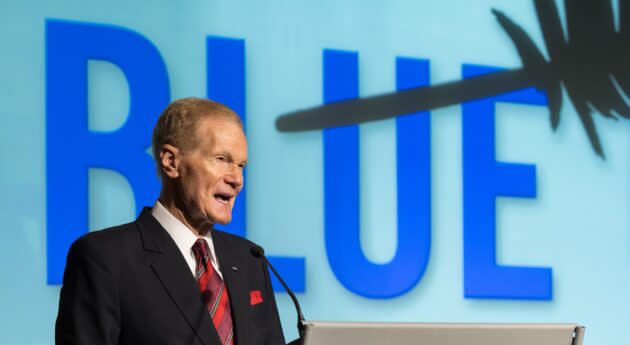
NASA Administrator Bill Nelson will visit Jeff Bezos’ Blue Origin space venture in Kent, Wash., to get a firsthand look at the Seattle area’s growing space industry.
Nelson said that “NASA’s work with Washington commercial space companies and academic institutions demonstrates the power of investing in America.”
“NASA partnerships in the state are creating good-paying American jobs and fueling groundbreaking research and technology that will help propel humans back to the moon and onward to Mars,” Nelson, a former U.S. senator, said in today’s news release. “With the help of Washingtonians, NASA will make new and more exciting discoveries while also inspiring the Artemis Generation — the next generation of scientists, engineers, technicians and explorers.”
Blue Origin CEO Bob Smith will join Cantwell and Nelson for the summit’s panel discussion. Other industry representatives include Stoke Space CEO Andy Lapsa, Starfish Space co-founder Austin Link and Gravitics CEO Colin Doughan. Nikki Malcolm, CEO and executive director of the Pacific Northwest Aerospace Alliance, will also be there.
The STEM education community will be represented by Jihui Yang, vice dean of the University of Washington’s College of Engineering; Mary Rezac, dean of Washington State University’s Voiland College of Engineering and Architecture; and Kareen Morales Vincent, an aerospace manufacturing and maintenance instructor at the Sno-Isle TECH Skills Center. In addition, Washington state students have also been invited to sit in at the summit.
Opinion: An astronaut’s take on space tourism and the Titan submersible
The implosion of the Titan submersible and the rise in commercial space company tourism raises questions about balancing curiosity with due diligence, writes former NASA astronaut Leroy Chiao.
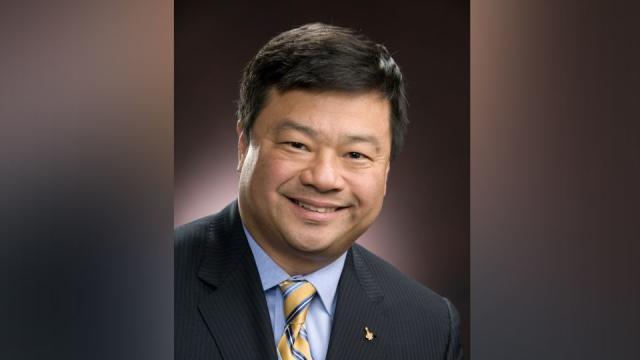
It can be tempting to compare underwater and space adventure excursions. Both carry travelers aboard specially-designed vehicles into hostile physical environments, where living beings would otherwise not be able to survive.
There are important differences between a voyage to the depths of the ocean and travel to the edge of space. Trips aboard the submersible lasted multiple hours, while the space trips are over in minutes. Visitors to suborbital space will also experience microgravity and the beautiful view of the Earth from space.
Several spaceflight participants, or non-professional flyers, have safely and successfully flown orbital missions aboard Russian Soyuz and Dragon spacecraft over the years. Both types of space flights involve adventurous wealthy individuals, but bear no real similarity to the Titan excursions.
For NASA and Russian missions, use of the International Space Station (ISS) as a safe haven is part of the contingency plan. How rescue should be managed for commercial flights remains unclear. There are, however, the same uncomfortable questions that were raised in discussion about rescuing a submersible from the ocean floor: What is the plan if the spacecraft loses the ability to come home on its own? Who will foot the cost for a space rescue if something goes awry? Should taxpayers be expected to cover all or most of the expense?
The current suborbital offerings are different from the commercial orbital spacecraft. They use vehicles that were designed and built by commercial companies. In the US and for all US companies, the Federal Aviation Administration (FAA) is the regulatory body responsible for issuing launch and landing licenses, and for assessing environmental and public safety of vehicle operations.
The FAA does not certify these vehicles, however, as they do airplanes. Its role is significantly different from that in the commercial airline world. Verifying the operability of these vessels remains, for now, the job of the companies themselves.
People often ask me if I would fly on these vehicles. The answer is I might have – if I had the financial means and had not already had my NASA spaceflight experiences. I’ve flown on four missions to space, but I’ve never been fortunate enough to be part of a lunar mission. So yes, I would consider it, if it involved travel to the Moon.
But before I boarded a commercial spaceflight, I would do a lot of homework first. And I would do the same before boarding any vessel that plunged into the deepest part of the ocean.
The key thing for any would-be passenger planning to board commercial vehicles to space or in the ocean is informed consent. Passengers have to take the time and effort to inform themselves about any potential risks and then decide whether or not to take part.
Passengers on the Titan had to sign informed consent documents, just like the non-professional individuals who choose to go on a spaceflight adventure. Due diligence should include asking a lot of questions and looking into the company, history, and as much as possible, the technical aspects of the vehicle and operations.
But here’s the bottom line: Life is about balancing risks and rewards and, in most cases, society leaves it to adult individuals to decide for themselves.
There will always be plenty of Monday morning quarterbacking after any tragedy. But this should not lead to restrictions on our freedoms or curtail our curiosity when it comes to exploring the farthest reaches on Earth and beyond.
Sea lions aren't acting like themselves — they're more aggressive because of algae bloom in California
Southern California beachgoers are being warned that sea lions are showing unusual signs of aggression as they continue to be exposed to a toxic algae bloom.
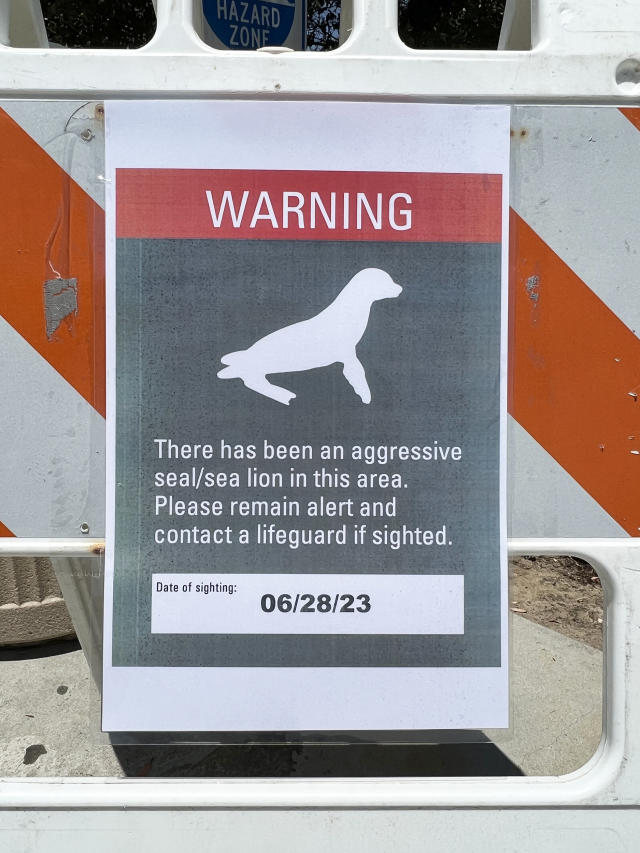
Warning signs were placed at Salt Creek Beach and Strands Beach after two reports this week of sea lion-related injuries, a spokesperson for Orange County Parks said.
The first incident occurred at Salt Creek on Monday, when a juvenile told lifeguards that he had been bitten while wading in the water. He was treated and released to a guardian, with the advice to seek additional treatment at an urgent care clinic.
Lifeguards at Strands Beach were alerted to another injury that evening, but the person involved declined treatment.
Strands Beach closed Tuesday afternoon after reports of an aggressive sea lion emerged, and it reopened Wednesday, the parks department said.
Aggression toward humans is not typical for sea lions, but the mammals are very sick at the moment because of an offshore toxic algae bloom, said John Warner, the CEO of the Marine Mammal Care Center, a nonprofit rescue organization that serves Los Angeles County.
The algae, Pseudo-nitzschia, is consumed by fish, which are then eaten by sea lions. The fish carry a neurotoxin called domoic acid that the algae produces, essentially poisoning the sea lions, Warner said.
"It literally affects their brains, and the behavior of sea lions — especially when the concentrations of domoic acid are quite high — is drastically changed," Warner said. "They become symptomatic in ways that are just unpredictable in terms of their behavior, aggressiveness that we don't normally see."
Justin Viezbicke, the stranding coordinator for NOAA Fisheries’ West Coast Region in California, said the department does not track sea lion bites in part because of their rarity.
Similar bites have been reported in other Southern California regions, Warner said, including Santa Monica, but most appear to have been in shallow water.
Experts believe the mammals are so sick and scared that they are attacking humans who get too close in their vulnerable state, Warner said.
"None of this has been researched and definitively pointed to that I'm aware of," Warner said. "But putting 2 and 2 together, when you have this very large algal bloom and domoic acid event, it's pretty easy to connect the dots in a way that we're comfortable assuming that these are obviously connected incidents."
Warner believes people should not fear sea lions but simply understand that approaching them at the moment is not a good idea.
"Sea lions, you know, they're the ubiquitous California ocean wildlife animal that people love. And this is not them," Warner said. "So I don't want this to turn into people viewing sea lions like they do 'Jaws.' ... This is not sea lions' suddenly turning into evil people biters. I don't want people afraid of these animals going forward. This is a really sad event."
The Marine Mammal Care Center is working to rescue and treat sea lions affected by domoic acid exposure. Although there is no standard treatment, the center's website says the animals are hydrated with fluids, antiseizure medication and general nutrition that will not expose them to the toxin.
Astronaut’s history-making mission is the latest step for a nation with grand space ambitions
Dubbed the “Sultan of Space,” Sultan Al Neyadi’s latest work with NASA is helping the UAE to become a leading power for space exploration in the Arab world.
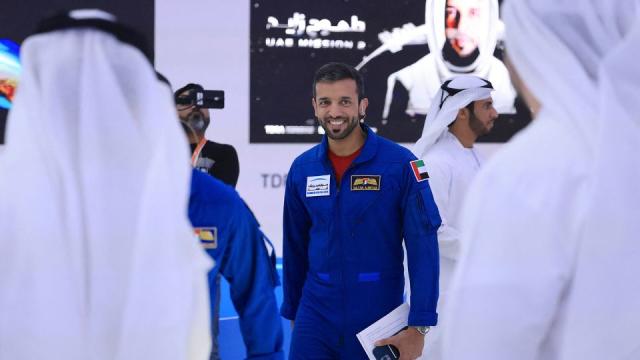
Floating upside down, while excitedly moving a microphone about in mid-air, astronaut Sultan Al Neyadi laughed when asked if he’s ever seen aliens.
“Not yet,” he replied, before pulling out a blue plush toy dressed in a space suit. “But everybody thinks that Sohail (the toy) is an alien. So, if he is an alien, then yes.”
Dubbed the “Sultan of Space,” Al Neyadi, who is from the United Arab Emirates, has spent three months delighting crowds of schoolkids across the Gulf state and teaching them about the wonders of the universe via videolink — all while floating hundreds of kilometers away on the International Space Station.
“I didn’t feel it because I was really focusing on the mission, and it was (a) really great feeling just to see that you are floating in a spacesuit,” Al Neyadi told CNN’s Becky Anderson. “It’s just like a small spacecraft. It provides oxygen and CO2 scrubbing and cooling, and what is preventing you from dying is just a small layer of glass.”
Al Neyadi’s mission is just the latest space-related milestone for the UAE, a nation that is quickly becoming the leading power for galactical exploration in the Arab world. CNN dialed into the ISS from the Mohammed bin Rashid Space Centre (MBRSC) in Dubai, which has become the incubator for the Gulf state’s ambitions in the cosmos.
This investment in space is not about curiosity about the cosmos — it’s part of a wider plan to build the UAE’s post-oil economy. In a fast-paced international space race, where superpowers like the United States and China are the competition, a strategic vision is key.
“Our objective is always to try and do these exciting projects that really put the UAE at the forefront of exploration,” MBRSC director-general Salem Al Marri told CNN while giving a tour of the facilities. “It’s all about data. They say the new gold or the new oil is data.”
“So if you’re tracking cars, if you’re looking at planes, environmental purposes, whatever it may be, there’s hundreds if not thousands of applications that you can use from one image,” Al Marri said.
Al Marri is particularly excited about the potential of UAE-built satellites, including KhalifaSat and the soon to be launched MBZ-SAT. The nation doesn’t just want to launch the orbitals, but build an industry around them.
“What’s beautiful about this satellite is it’s fully designed by our team here,” said Al Marri, speaking about the MBZ-SAT. “All of the project management, every single piece you see here is designed and project managed by our team.”
The last decade has seen a dramatic shift in the nature of space exploration. While once the remit of governments and national programs, more recently private companies and billionaires have taken it upon themselves to push the boundaries of what humans know about the universe — especially as the monetization of the cosmos becomes more feasible.
“Space is predominantly government-led, so there’s big investments from government because of the need for these types of satellites. But that doesn’t mean private sector cannot lead the development,” Al Marri said. “In a country like the UAE, this is funded by the government, it’s supervised by the government, but private sector now is building it.”
The UAE will soon be exploring this area of the industry, too.
“I think space tourism is the way for the general public, or at least the very wealthy general public, to get a chance to taste a little bit of weightlessness and be part of the space industry,” Al Marri said. “The UAE could play a role there.”
Guy's Cliffe gardeners look to unearth new volunteers
New volunteers are being sought to help grow flowers and vegetables in a Warwickshire garden.

Warwick is a town steeped in history, famously home to one of the UK's most popular tourist destinations, Warwick Castle.
But not so well-known, just a mile from the centre of the town, is a well-hidden green oasis dating back to the 18th Century.
Guy's Cliffe House Walled Garden used to provide food for the entire Guy's Cliffe estate from the 1770s to the late 1940s.
And now, thanks to the efforts of a band of volunteers, the same ground is growing fruit and vegetables to help local people during the cost of living crisis.
The trust which runs the garden, brought back to life in 2014, is now looking to attract more volunteers to join the 30-strong group that already spend their days planting and picking.
"When I first walked in here. I couldn't believe what I was seeing, the tranquillity and the peace," said volunteer Elizabeth Phillips.
"There's almost a spirituality about the area. And all these wonderful flowers, vegetables and fruit being grown by all these amazing people that come here to help."
"It became a derelict area," said Mrs Phillips. "So a group of people came together who actually wanted to restore it.
"They wanted to bring it back to its former glory and so it began.
"They got grants to put with paths in. They followed the original design of the garden and many thousands of hours have been put in by volunteers to bring this garden back to life."
"We're hoping to bring schoolchildren in who can learn things in here that they can't learn in the classroom but are linked to their curriculum," said Mrs Phillips.
"And this year we are now growing vegetables as we supply the local night shelter and the food bank."
Mrs Phillips added: "We're hoping people will come along and see the garden as it's coming into bloom but also people who might be interested in coming along and help us.
"To come here, it's an oasis of peace and tranquillity. You forget about everything else.
"There's something about nature and leaves and trees. It makes you feel better by the time you leave, and I've certainly experienced that."
0 Likes
